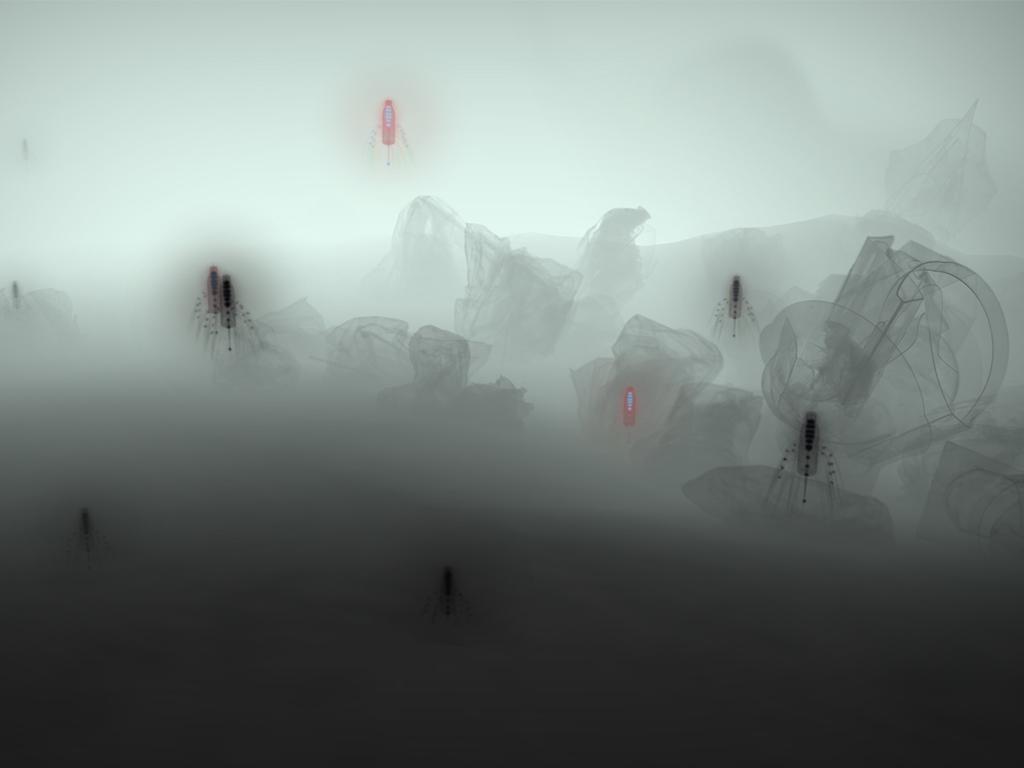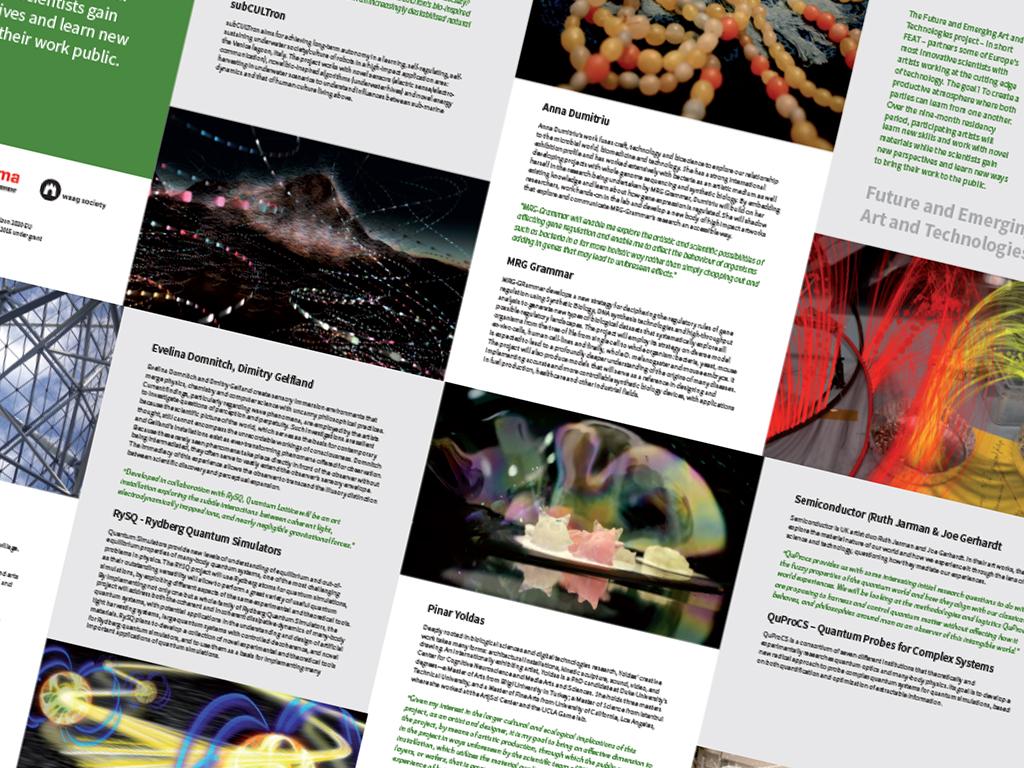This is a guest blog post written by Erich Prem, FEAT project coordinator
The main aim of FEAT is to stimulate take-up of FET (Future Emerging Technologies) research results and create internationally significant new forms of impact and innovation.
During the 9-month-residencies, the artists closely collaborated with researchers and scientists working on fundamental research in high-risk, visionary areas of novel technologies. These areas include fields as diverse as gene regulation, quantum physics, underwater robotics, carbon capture, and exascale computing.
Openness and hands-on collaboration were important for the success of the FEAT residencies. The artists were closely involved in the FET project they were depicting. They joined the researchers in their labs and in their daily routine and therefore could acquire specific technical competencies, e.g. laboratory techniques or the use of highly specialized instruments.
The works of art vary in form, from simulations and visualisations to performances and sculptures. These collaborations weren’t solely organized as an artistic endeavor. We also took a closer look at the impact of artistic engagement on the work of scientists and engineers. Furthermore, we aimed to make technology project results visible to non-scientific audiences including innovators, research managers and citizens.
As expected, the artists involved in the project went on to ask fundamental questions on different scientific issues and their societal impact. When FEAT artist Anna Dumitriu points to the serious issue of antibiotic resistance and accessibility of genetic modification techniques such as CRISPR, it complements the science from a societal and critical perspective. Her artwork begs the question will future technologies be able to ‘mend’ issues that crucial past scientific work and its applications. In a similar line, Pinar Yoldas reports that she created a future urban scenario of the technologies developed in the DIACAT project. It is fascinating that even domains as abstract as supercomputing led artists Špela Petrič and Miha Turšič to ask essential questions about the socio-cultural footprint of algorithmic production.
After many months of fruitful collaborations between artists and FET projects we are now happy to present the première of Future Emerging Art and Technology, an exhibition of artworks created by these internationally acclaimed artists working in collaboration with cutting edge European Union research projects.
Artist Anna Dumitriu’s installation fuses craft techniques, altered historical objects and biological media to explore her editing of the genome of an E.coli bacteria strain using a technique known as CRISPR to remove its evolved ability to resist antibiotic drugs. The artist group boredomresearch’s re-imagined submersible robots driven by their need to collectively express their futility in the face of the overwhelming pollution of our Earth’s waterways. Semiconductor are a pair of artists usually known for their explorations of how invisible phenomena becomes material, such as the noise stars make or how geomagnetism works. They have created an immersive two-channel piece that visualises quantum probing – measuring the motion and interaction of subatomic particles. Evelina Domnitch and Dmitry Gelfand have trapped spores in the electric field of an ion trap. There, they begin to oscillate and they - as one might put it – dance.
With LifeSpace Dundee, we have found the perfect partner gallery for FEAT. The research-driven gallery space is curated as a collaborative partnership between researchers from Duncan of Jordanstone College of Art and Design and researchers from the School of Life Sciences, both in Dundee, Scotland. It not only enables opportunities for interdisciplinary art and science interactions, but also provides a location for curatorial exchange between students, researchers and the general public. Come and visit us!
This project has received funding from the European Union’s Horizon 2020 research and innovation programme under grant agreement no. 686527.

